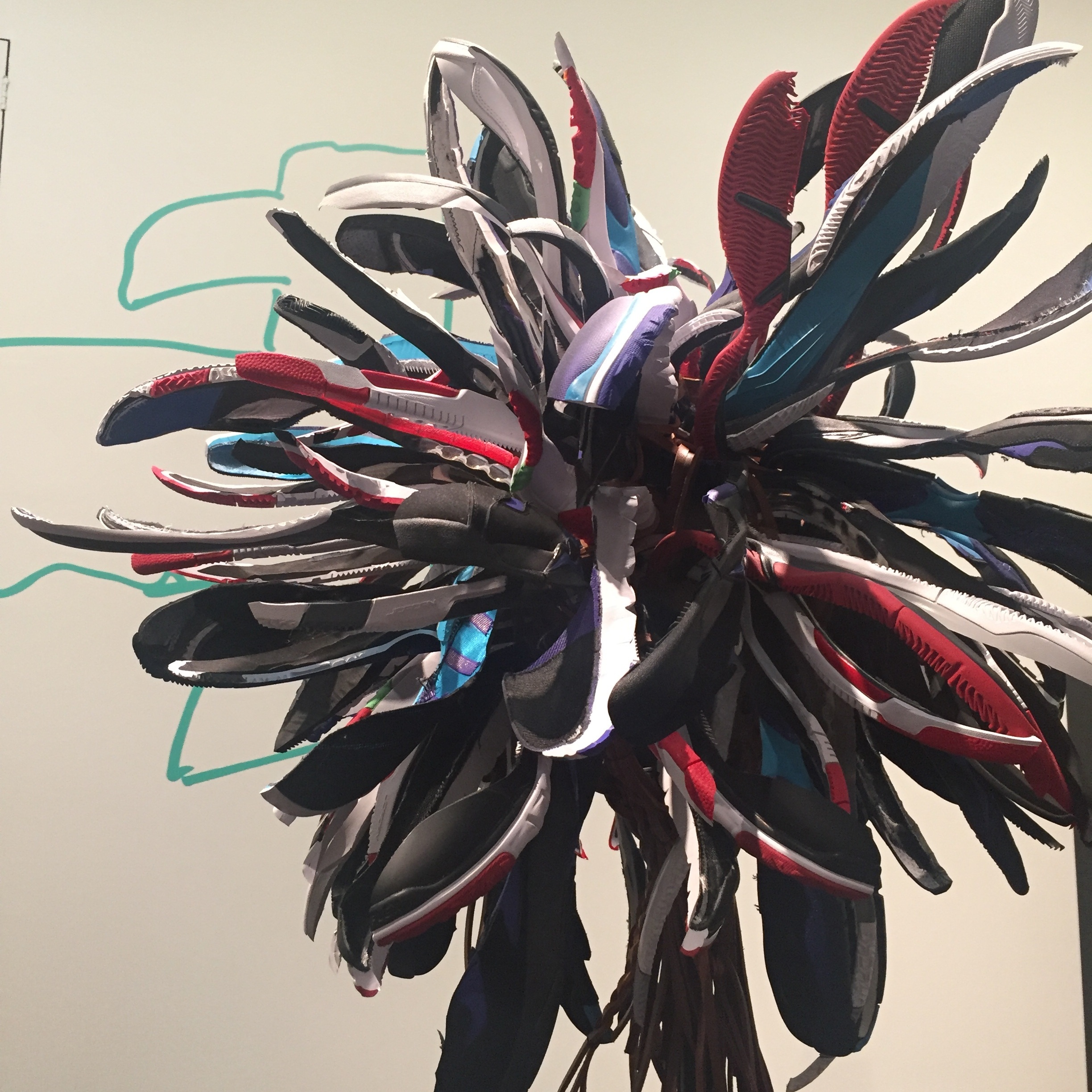I was fortunate to catch this exhibition in its final days, and am sad I didn’t make it sooner…only as it would have allowed me time to visit again. The first pieces you encounter as you walk from the main gallery into Jungen’s exhibition are mixed material - leathers and ancient natural materials mixed and interspersed with neon lights. They have a magnetic effect, drawing you in as the colours change. It is only after being drawn in that you notice the larger work in the centre of the room, Tombstone, which is plastic making what appears evocative of a turtle shell that at first seems suspended, until you notice the deep black block of filing cabinets beneath it. Turtle island sits on bureaucracy.
From here, you enter through into the larger space, which is pure whimsy. The friendship centre has a floor demarcated like a school gymnasium, with giant totems built of stacks of golf bags positioned in the corners. Dotting the space, almost too many to properly look at, are masks and head dresses and woven blankets created from Nike shoes and shirts. The sheer intricacy of each individual sculpture is overwhelming; how the materials from the shoes align perfectly to create pattern and balance. Something deeper is here in the undercurrent, only occasionally becoming overt with pieces like I Shall Be Released, which departs from the whimsy to a place of struggle.
This gives way as you walk through a hallway of lockers, to the most political pieces. A whale skeleton made of plastic chairs. Gerry cans painted in primary colours. Chairs wrapped in dark fabrics. The constriction is palpable here.
As you move back through to exit the installation, passing through the sculptured Nikes that initially seemed so whimsical, the dark colours seem more prominent. More present. Something you can’t forget.
Brian Jungen - I Shall Be Released, 2015


